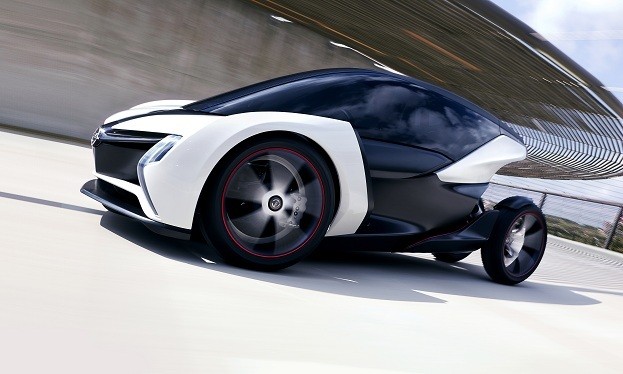The oldest industrial brand name in the General Motors portfolio, German’s Opel division started as a sewing machine manufacturer in 1862. Evolving to the production of bicycles soon later, Opel’s presence in wheeled transportation would turn to automobiles for the first time since 1899. At the 2011 Frankfurt Motor Show, Opel’s roots for their adventurous climb into the auto industry debuts in the ultra-modern RAK e Concept.
Before Opel integrated with General Motors in 1928, the Germany car manufacturer captivated press and potential customers through the performances of experimental rocket -driven car. Called the Opel RAK, streamlined shapes and the solid-fuel rocket propulsion demonstrated a radical exercise in alternative automotive power. The Opel RAK 2 example of the rocket car achieved 143 miles per hour on four wheels. Developed 83 years after the successful RAK 2 demonstrations, the Opel RAK e Concept projects excellence in electric car technology.
As an experimental design and technical platform, the Opel RAK e Concept resembles a vehicle from the latest Tron movie. Not consisting of pixels and paragons, the Opel RAK e Concept is a narrow four-wheeler built around a steel space frame. Said to incorporate affordable materials rather than expensive, exotic products in construction, the Opel RAK e is a lightweight vehicle presented with a minimal profile. Carefully packaged, braking and power systems are designed to maximize the cozy concept car. The vehicle rides on relatively skinny low-rolling resistance tires.
Small and light overall, propulsion needs for the Opel RAK e Concept is exhibited as quite modest. An electric-powered vehicle, the Opel RAK e Concept offers a maximum power output of 36.5 kilowatts. Drawing power from a 5-kilowatt hour battery, a top travel distance of 100 kilometers (62 miles) is possible on the Opel RAK e Concept immediately following a three-hour charge. Opel advertises the RAK e Concept’s being supplied from a 5 square meter, 500-watt solar panel for minimized environmental impact. According to the German auto company’s estimates, the Opel RAK e Concept can realize 100 kilometers of travel at a cost of one euro (the equivalent of $1.36 in American funds).
Seating a driver and passenger in a tandem-style, the Opel RAK e Concept enclosed cabin has active chassis components visible to the riders. The unusual two-seat set-up inside the Opel RAK e Concept preserves enough roominess to provide all the amenities modern travelers expect in a vehicle. One advantage for the narrow tandem cockpit set-up is unhindered vision ahead and alongside the driver. Custom fitting to the driver, the RAK e Concept features a completely adjustable steering wheel and foot pedals. Infotainment system as well as climate controls can also be found inside of the RAK e Concept collected into convenient displays.
The Opel RAK e joins the Audi urban concept and the slightly larger BMW i line-up as electrified compacts presented at this year’s Frankfurt Motor Show. With drivers in parts of Europe paying as much as twice the equivalent for the same amount of gasoline as United States territories, the motivation to consider smaller electric cars could simply be enough to provoke a production variant of the Opel RAK e.
Information and photo source: General Motors


